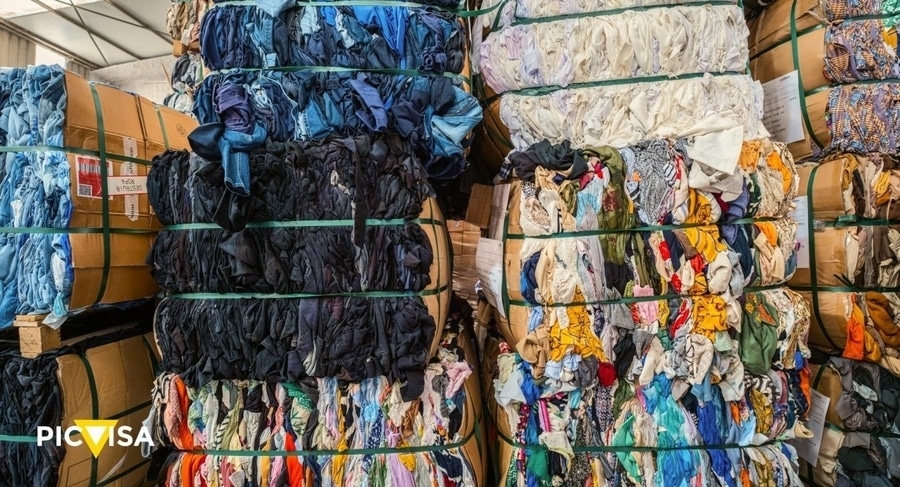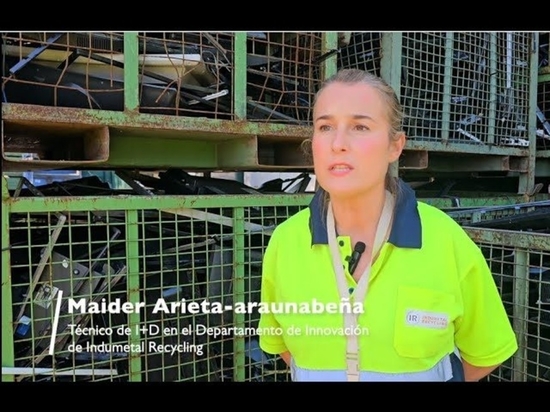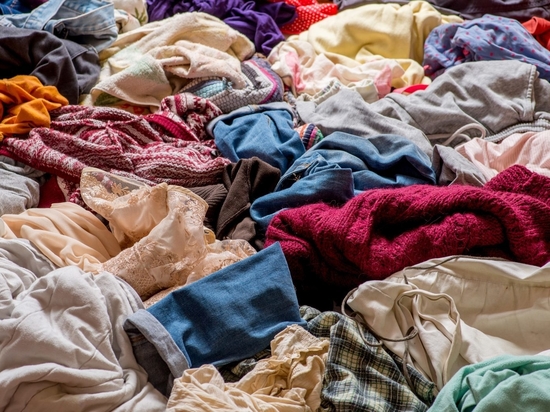
#White Papers
All about textile and clothing recycling
All about textile and clothing recycling
All about textile and clothing recycling
The process of recovering fiber, yarn, or fabric to reprocess them into new and useful products is one of the strategies used for textile recycling. Most of the materials used in this process are usually divided into two categories: pre-consumer and post-consumer waste. The former arises during the manufacturing process: from fabric scraps to production surpluses, including defective products. These materials are reused to make new garments and, in other industries, to produce furniture, mattresses, heavy yarn, housing construction materials, automotive components, and paper. Post-consumer waste includes clothing, footwear, and home textiles that have reached the end of their useful life. To implement effective textile waste management strategies, this distinction is essential, as is the classification of textile waste into various material categories:
Natural fibers. Cotton, wool, and silk are easily recyclable because they are biodegradable. However, their production often involves intensive use of natural resources and can cause negative environmental impacts, primarily deforestation and water pollution.
Synthetic fibers. Derived from chemicals and petroleum, synthetic fibers such as polyester, nylon, and acrylic are less biodegradable and contribute to soil, water, and air pollution. Additionally, producing synthetic fibers often involves the use of non-renewable resources and the emission of greenhouse gases, exacerbating their environmental impact.
Fiber blends. Many garments and home textiles are made from blends of natural and synthetic fibers, complicating their management and recycling. They require special processes to separate and recycle each type of fiber properly, which can increase the costs and complexity of managing this waste.
Due to the lack of adequate infrastructure and the limited use of advanced technologies—such as those offered by PICVISA for sorting materials by composition and color for subsequent recycling—the viability of sustainable textile recycling solutions is restricted. As a result, most garments released for sale each year end up in incinerators or landfills. In 2023, a total of 183.8 billion clothing items were consumed worldwide, but less than 1% of textiles are recycled into new products on a global scale.
The Swedish Environmental Protection Agency was a pioneer in raising the alarm in Europe: between 2000 and 2009 alone, textile consumption increased by 40% in Sweden. The European Commission itself warns that the European Union produces 12.6 million tons of textile waste annually; discarded clothing and footwear alone account for 5.2 million tons, or 12 kilos per person per year.
It is time to combat this scourge and take action. The global environmental impact of the textile industry, especially fashion, is devastating. Recycling textiles is urgent because it reduces landfill space, decreases pollution, and cuts energy and water consumption. Academic studies show that textile reuse and recycling are key to ending incineration and landfill disposal. However, textile reuse provides greater environmental benefits compared to recycling.
For this reason, it is advisable to donate any clothing we no longer use. There are street containers designed for this purpose, but it is also possible to take items to dedicated collection points, such as those run by NGOs like Caritas in Spain. In neighboring Italy, Fratelli Esposito stands out for its expertise in managing and recovering used clothing. In the United States, Goodwill recently announced plans to help divert textiles from U.S. landfills and create a path toward a circular textile ecosystem.
Another reuse option is to sell clothes through tech apps: platforms like Vinted or Wallapop have become great allies. And if we can’t dispose of our clothes because they are too worn, the good news is that textile materials can be recycled into new clothing or other products. This is an important way to minimize the environmental impact of clothing production and disposal. Still, we should never forget that the best option is always to consume less and, if we do, to purchase higher-quality, more durable products that can be repaired.Important fact: Fast fashion causes garments to be worn only about seven times on average. In our continent, people use only 30% to 40% of what they keep in their closets. In the United Kingdom, about 49% of all unwanted textiles are thrown away each year, which equals about 35 items per person annually.
Why is textile recycling so important?
Producing excess clothing involves both economic and environmental costs. Some global annual figures confirm this. According to a report by the University of Leeds, citing a 2017 study by the Ellen MacArthur Foundation titled “A Review of the Socioeconomic Benefits of Textile Recycling,” the global impact of textile production amounts to 1.2 billion tons of greenhouse gases; water consumption of around 93 billion cubic meters; 8 million tons of fertilizers and 200,000 tons of pesticides for cotton cultivation; and 42 million tons of chemicals, of which one million are dyes.
textile recycling
The textile industry has started to address the problem by turning used clothing into fabrics to make new garments or products such as padded mats for chairs and loungers, cleaning cloths, industrial blankets, and more. Textile recycling is not new. In the past, sweaters, scarves, and other wool garments were unraveled, and new items were made from the yarn, adapted to new sizes or current fashions. What is new is the range of innovative strategies for cascading the use of textile fibrous waste by transforming it into non-hazardous secondary raw materials suitable for cleaner and more environmentally friendly applications, such as construction materials and geotechnical engineering.Obliged to comply with the European Directive 2008/98/EC, the textile industry launches initiatives such as Re-Viste, a program recently promoted in Spain by Inditex, Mango, and El Corte Inglés. It is the first alliance of companies in the fashion, footwear, sportswear, and home textiles retail sectors that aims to act in accordance with Law 7/2022 of April 8 on waste and contaminated soils for a circular economy, which will come into effect in 2025. This Collective Extended Producer Responsibility System (SCRAP) of the Association for Textile and Footwear Waste Management will launch its pilot test next April.
How does textile waste recycling work?
Changing the way we produce and consume textiles is essential. In addition to reusing clothing and promoting second-hand buying and selling, it is crucial to recycle textile products. This involves various processes:
Mechanical processing. This recycling method breaks down textile fabric while preserving the fibers. After shredding, these fibers can be spun into new fabrics. This is the most commonly used technique and is particularly well-developed for cotton textiles. Mechanical processing protocols can differ depending on the material, requiring various levels of sorting before the process begins. Textiles must be separated by fabric composition and color to avoid re-dyeing and bleaching. Once sorted, textile materials can be shredded, washed, and separated into smaller fibers. The fibers are then aligned in a process called carding, preparing them to be spun together. Some fibers, including cotton, must be spun with a carrier fiber (cotton, organic cotton, or polyester) to maintain higher quality. When the fibers are spun into new yarn, they can be used to create new textiles. The number of times a material can be recycled depends on the quality of the fibers, which decreases with each mechanical processing cycle.
Chemical processing. Chemical recycling is used for synthetic fibers such as polyethylene terephthalate (PET). It uses a series of processes to recycle waste streams into basic chemicals, called monomers. This depolymerization process removes contaminants from the raw material, such as dyes and unwanted fibers. Many industries, such as apparel and footwear, use the resulting monomers to create new chemicals and materials.
Unlike mechanical recycling, chemical recycling produces high-quality fibers similar to the original fiber used. Therefore, new fibers are not needed to support the product resulting from the chemical process. Different chemicals and processes are used for other materials such as nylon and cellulose-based fibers, but the overall structure of the process remains the same.
To address these processes, automated technology like that manufactured by PICVISA is crucial. It is designed to sort garments into more than 70 different categories, thanks to a dual conveyor belt system capable of handling up to two tons of clothing per hour. This innovative solution significantly improves sorting efficiency and accuracy, not only based on material but also considering its shade. Thanks to PICVISA, the textile industry and organizations specializing in recycling these materials will take a further step toward a circular economy, ensuring business sustainability while mitigating their environmental impact on the planet.





